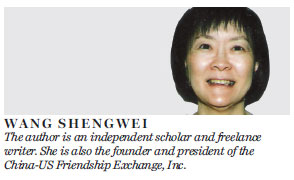Recently China unveiled an ambitious plan, titled "Made in China 2025," amid weak demand for China-made products. The country wants to climb up the value chain to deliver more than 850 million people into the ranks of the middle class by the end of the next decade. China will strive to become an industrial country by 2025 and by 2049, which marks the country's centennial founding anniversary, become a global innovative and high-tech manufacturing power.
The plan focuses on 10 key areas includes new information technology, numerical control tools and robotics, aerospace equipment and etc.
China also wants to establish a manufacturing innovation center and boost intelligent manufacturing developed from the fourth industrial revolution, including digitalization or a sort of Internet of Things for manufacturing - from smart grids, intelligent buildings and traffic control systems to Product Lifecycle Management software, intelligent automation, cyber security, etc.
Shenzhen is the mainland's first and one of its most successful Special Economic Zones. It is now dubbed China's Silicon Valley. With Hong Kong, one of the world's top financial centers and freest economy, Shenzhen should unite and become a leading innovation hub.
According to the City Competitiveness Blue Book unveiled by the Chinese Academy of Social Sciences, Shenzhen surpassed Hong Kong to take top spot in China's ranking of most competitive cities in 2014, while the 2015 annual report by the International Institute for Management Development (IMD) in Lausanne, Switzerland, ranks Hong Kong as the world's second most competitive economy behind the US. The IMD has evaluated 61 economies in "economic performance", "government efficiency", "business performance" and "infrastructure" to give an overall score.
From 2013 to 2014, Shenzhen's GDP grew 8.8 percent to $260 billion (per capita GDP $24,336, expanded 10.62 percent) while Hong Kong's grew 2.3 percent to $290 billion (per capita GDP $39,871, expanded 4.75 percent). If the current growth trends hold, Shenzhen's per capita GDP will surpass Hong Kong's in less than 10 years. High-tech industry has helped Shenzhen achieve high economic growth and its six strategic industries - biotechnology, information technology, new energy, new materials, telecommunications and the cultural and creative industry, overlap substantially with those proposed in "Made in China 2025". Shenzhen invested about 4 percent of local GDP in research and development while Hong Kong invested less than 1 percent.
But Hong Kong's small innovation and technological base has nurtured brilliant high school students. This is shown by the recent triumphs at the Asian Physics Olympiad, and successful entrepreneurs like DJI's Wang Tao, and TT-Kuaiche's Gu Ying and his two other co-founders. Hong Kong's excellent universities also attract creative scientists worldwide as evidenced by Hong Kong Baptist University (HKBU) Physics Chair Professor Cheah Kok-wai's (born in Malaysia) invention of ArmoGlass. This ultra-hard anti-scratch cover made of nano-materials can be used for touch-screen devices. Its toughness proved to be comparable to that of single crystal sapphire, which is fragile. The fabrication process can be done by standard industrial deposition processes; therefore production can be scaled up with minimal development time and could be made in Shenzhen to lower costs. To commercialize this HKBU technology and begin pilot production, Cheah and his team established a company supported by a fund granted by the Technology Start-up Support Scheme for Universities set up by the Hong Kong government's Innovation and Technology Commission.
Hong Kong needs more of this kind of innovation success and should pay close attention to mainland's newest technical development and market. The "Internet Plus" concept was first proposed by Pony Ma of Tencent in 2012. Now, the US is entering into a "New Hardware Technology Era" primarily initiated by the geeks and makers in producing a new form of hardware industry like 3D printing, wearable smart devices, while the big enterprises act as the "Buyers" and "Pushing Hands". The mainland Internet giants Baidu, Alibaba and Tencent all have to pursue new innovation frontiers: Baidu is working on the "Chinese brain", "Baidu eye", "magic lamp", etc.; Alibaba is reportedly ready to engage in new, unmanned, intelligent electric vehicles; Tencent is working on the construction of the Internet of Things, etc. Moreover, the mainland stays on top with most tech-IPOs in the world for the first quarter of 2015 and has been the world's largest market for industrial robots for two consecutive years (2013, 2014), accounting for about a quarter of global sales.
Hong Kong-Shenzhen collaborations have evolved in recent years. Integration between the two economic-technological power houses can be expected to accelerate and together they will enjoy mutual benefits like China's Silicon Valley.

(HK Edition 06/03/2015 page12)
Guadalupe, a 55-year-old lady living in Spain, has been practicing tai chi for almost 20 years. She believes tai chi is not only a kind of martial art but a complete system of fusing traditional Chinese culture.

One of the potentially most traumatic things a girl has to go through is finding a new hairdresser.